UX Design & User Reseach
Personal Digital Assistant connected to Sundhedsplatformen
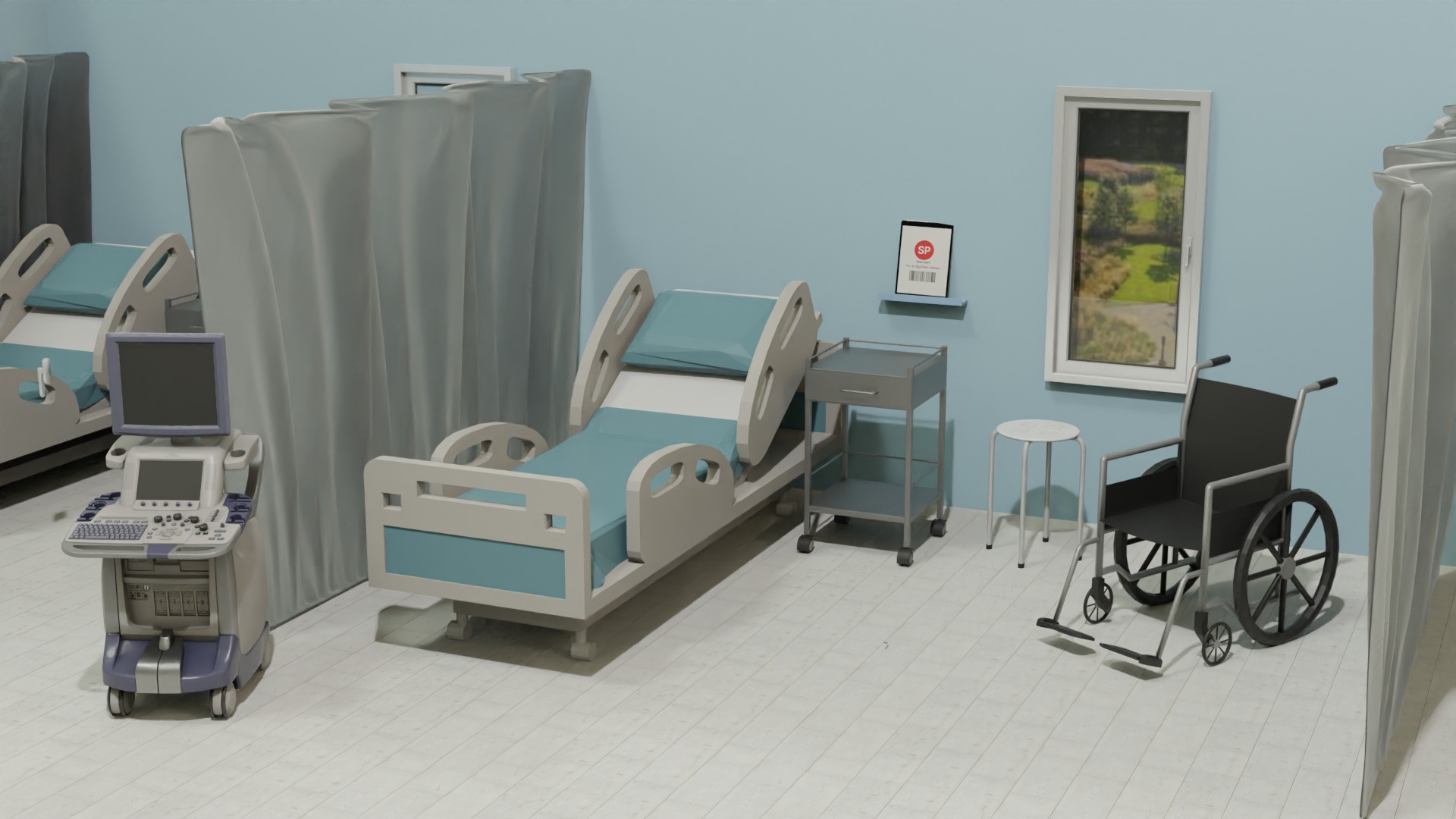
Background
Sundhedsplatformen is an IT system that integrates everything from patient records to work practices at public hospitals in Region Sjælland and Hovedstaden in Denmark. This centralization can create flexible workflows, but the downside is that some professional groups are not fully accommodated. In this project, we present a redesign of Zebra—a tool developed for nurses’ documentation, but one that is currently not being used optimally.
The design process aims to standardize documentation methods and strengthen the human relationship between nurse and patient by incorporating documentation directly into the patient room. Our redesign involves installing a tablet device at each patient’s bedside, thereby moving away from Zebra’s mobile functionality while still maintaining in-room documentation to involve the patient more actively in their own treatment process.
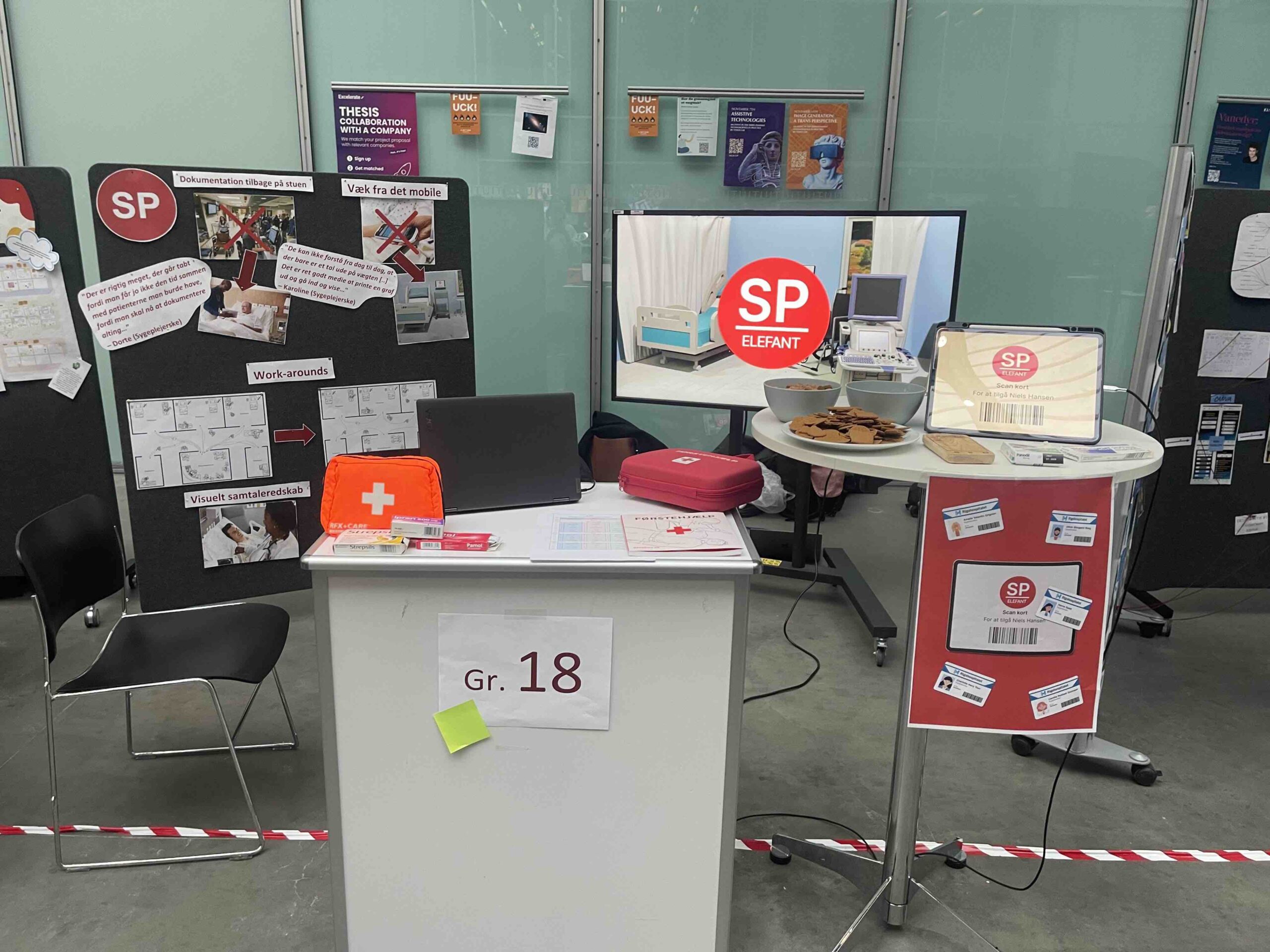
Key Findings from Interviews and Observations
Our research revealed that nurses developed workarounds to improve efficiency. One common workaround involved carrying a piece of paper to record patient measurements, which were later entered into Sundhedsplatformen (SP). This contrasts with the intended use of Zebra, which was designed for portable documentation, allowing nurses to document on the go.
However, Zebra’s heavy weight caused practical issues, such as nurses’ pants slipping when carrying it. Its small screen did not meet the needs for efficient documentation or information retrieval, and the requirement to log in and out repeatedly was time-consuming. As one nurse noted: “I don’t want to log in constantly” (Informant A, p. 16). These factors led nurses to avoid using the device altogether.
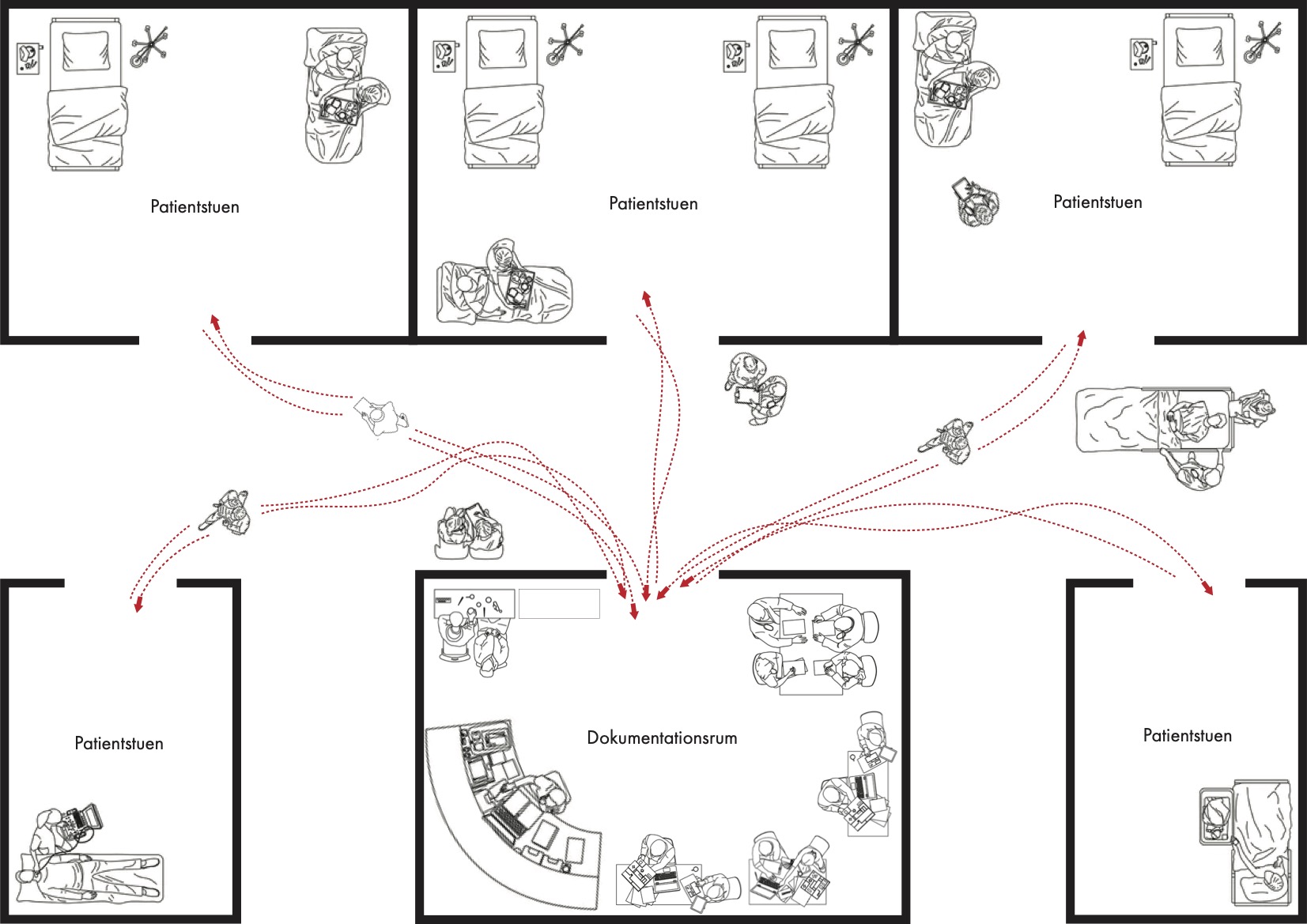
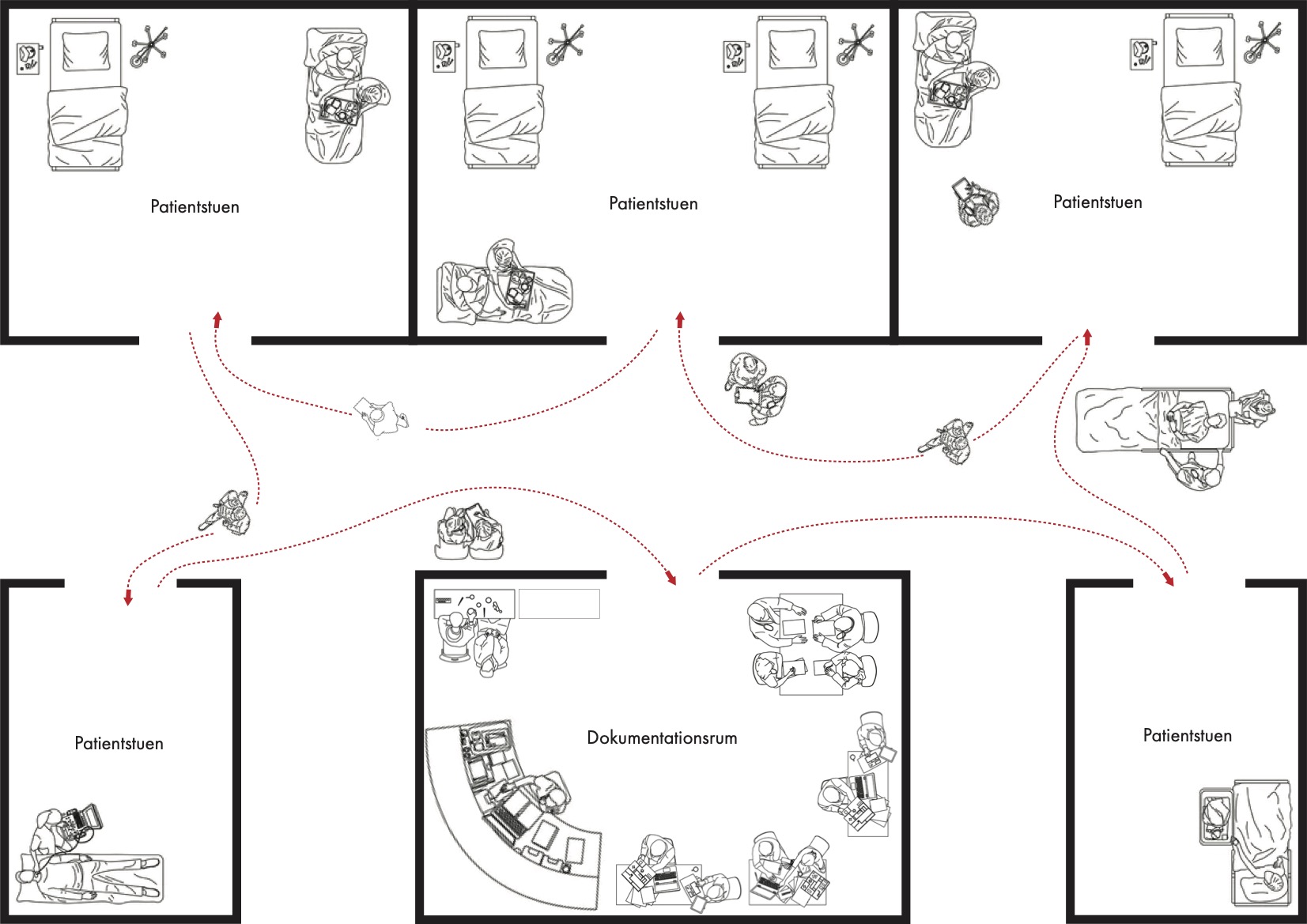
Design concept
The redesign is based on three fundamental visions, developed and refined through our process with Sundhedsplatformen (SP):
-
- The design should support nurses’ empathy and professional expertise.
- The design should enhance the human relationship between nurse and patient by incorporating the documentation of the patient’s condition directly in the patient’s room.
- The design should consolidate each nurse’s preferred documentation methods (input) into a single, unified device (output).
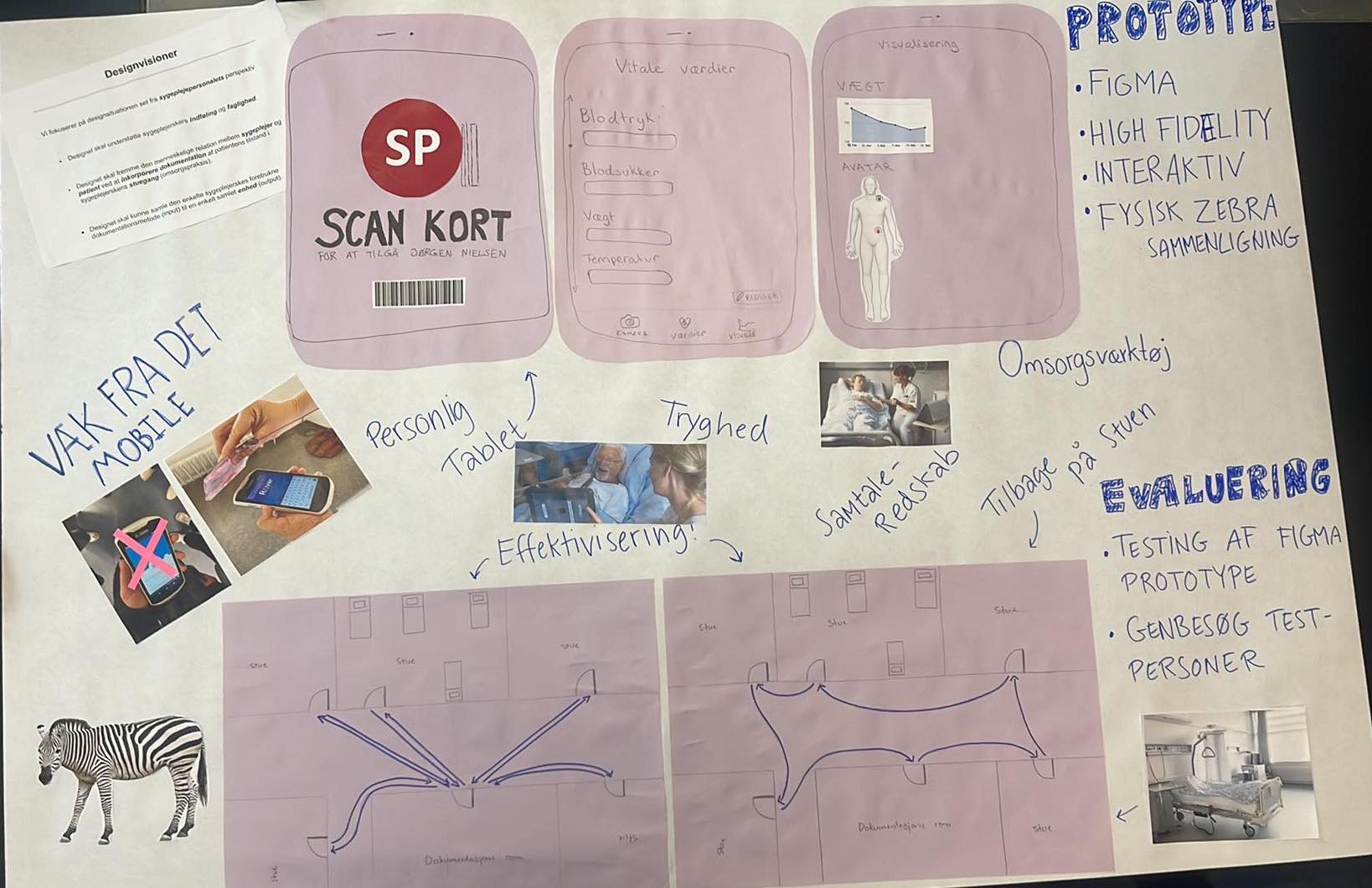
Redesigning Zebra: Introducing Elefant
Based on our research, which highlighted that Zebra was not user-friendly and often not used as intended, we developed a redesign called Elefant. Elefant is a tablet-based Personal Digital Assistant (PDA) integrated into patient rooms for those with long-term hospital stays. Its larger screen size and stationary design make it more practical for nurses, addressing the physical limitations of the original Zebra device.
The redesign aims to simplify the documentation of vital signs while also serving as a caregiving tool by involving patients more actively in their treatment. With Elefant installed in the patient’s room, patients can monitor that their vitals are being documented in real time, fostering transparency and engagement in their care. This setup minimizes the risk of nurses forgetting to document measurements and reduces the chance of losing vital data, as can happen when notes are written on paper—addressing key issues identified in our research.
To ensure data security without slowing workflows, nurses access the application by scanning their ID card and entering a four-digit code—eliminating the need for frequent logins. Other information that doesn’t require the patient’s presence will continue to be documented on the central computer system in Sundhedsplatformen, maintaining the existing workflow for more administrative tasks.
The Elefant interface is divided into two main functions:
- Values – Provides a simple overview where nurses can immediately input patient measurements, reducing the need for double documentation.
- Visualizations – Includes visual tools like avatars, graphs, and wound photos on a timeline, allowing nurses to add comments. This feature also supports patient engagement by making complex medical information easier to understand. A calendar function helps both nurses and patients keep track of the hospitalization process.
By simplifying documentation and enhancing patient involvement, Elefant addresses the core usability issues we identified with Zebra. It supports relational work between nurses and patients while freeing up time for direct patient interaction. Ultimately, Elefant is designed to improve both the efficiency of nursing workflows and the patient experience during extended hospital stays.
This project was done in collaboration with Amalie V. Grignon, Camille R. Gonnsen, Jakob S. Wang, & Hanna Sadat.
